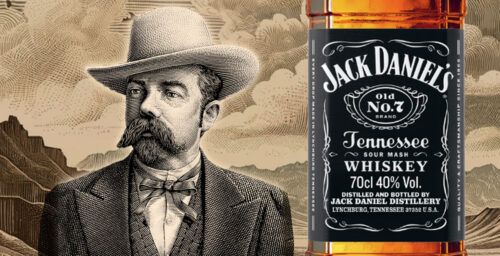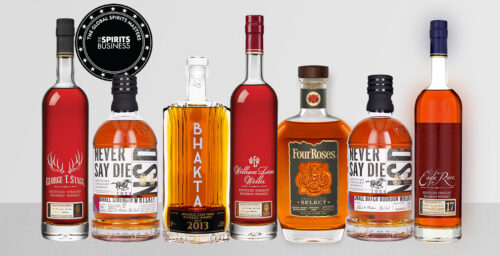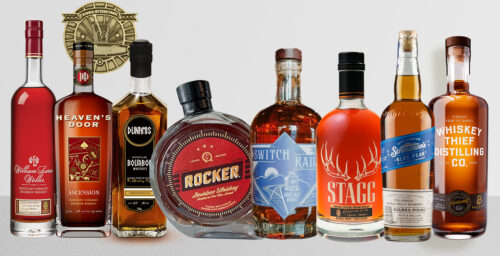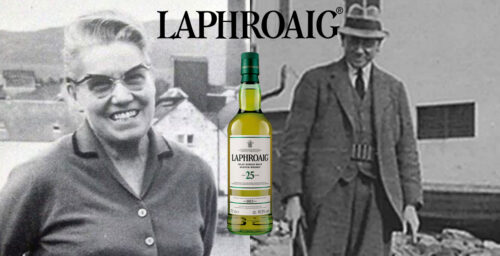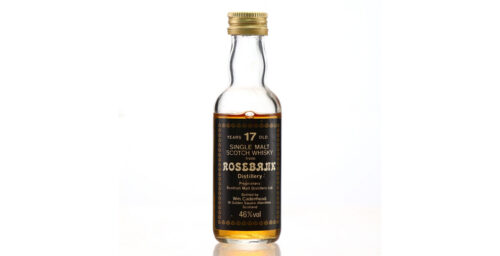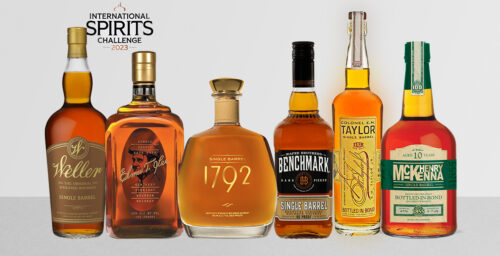Editor’s Note: As part of my recent trip to Kentucky I had the pleasure of spending a few hours touring the former Old Taylor Distillery, now known as Castle & Key, with master distiller Marianne Barnes. This interview is only slightly edited for clarity as Barnes had a great deal to say about the rebirth of this once famous facility and her own story.
It is thus a long article, but I encourage you to read it through to find out what happens when craft whiskey start up world meets old legend distillery.
Stepping onto the grounds of the former Old Taylor Distillery, currently rebranded as Castle & Key, is like stepping back in time to the early glory days of bourbon. It is a long drive from Louisville to get to this current hard hat reconstruction project, taking you from interstate to country roads to country lanes. It sets the tone though as you pull into the facility, with the faux castle at the front of the property letting you know you’ve arrived to something unique.
The Whiskey Wash writer Maggie Kimberl has already chronicled much of the back story of Castle & Key, including how current master distiller Marianne Barnes passed up a legacy opportunity at Woodford Reserve to tackle with a scrappy team the restoration of this old grand dame, so I’ll leave that to you to check out. As for my visit recently, that was more to see how things are going some months later.
To say I felt like I was standing in the middle of a giant undertaking of a long neglected distillery is an understatement. There is so much here which needs fixing, I can’t even imagine what the laundry list looks like for Barnes and the rest who have set up an office in what was once the distillery’s cafeteria. Things were still so much in rebuild mode while I was there I spent a bit of time dodging debris as I talked with Barnes while we wandered the property.
If one was to call Castle & Key a start up distillery, one would be getting the story correct. That is only half the tale though, as with most young distilleries they start with little equipment and a small garage. Barnes and company have the advantage of making use of some of the historic equipment still on site they have been able to bring back to life, alongside, of course, new gear brought in to help ease things along.
On a break from our tour the master distiller and I took time in the restored, and very beautiful, sunken garden to catch up on the Castle & Key story and legacy.
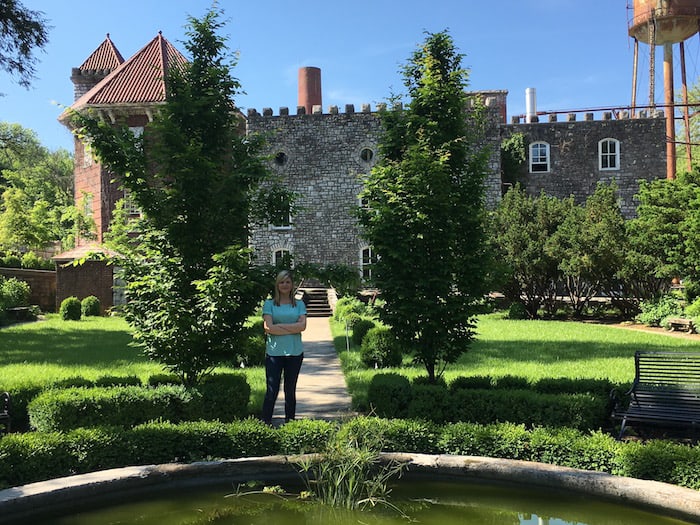
The Whiskey Wash: We’re here talking a little bit about the rebirth of a distillery legend. Can you tell me a little bit first about your background as a distiller and how you got into this space?
Marianne Barnes: Absolutely. I never knew that that’s what I wanted to do when I grew up. I thought I wanted to be an interior designer, and then somehow found my way into an auto shop class and fell in love with mechanics and diagnostics and really just figuring out how things work. Because I loved science and math so much in high school, my dad suggested I look into engineering. I started at the University of Louisville back in 2007…in the hopes of pursuing a chemical engineering degree.
There were a few prerequisite classes that I had to get out of the way. I got accepted into their Speed School program, which is not an accelerated degree … under the hopes to be in renewable energy or bio diesel. I just wanted to go and help the environment and fix the world or whatever, help the planet. I’ve always had a passion for that. In my sophomore year I was looking for an internship, interviewed at about seven different places, everywhere from roofing materials to renewable energy and ended up finding Brown-Forman. They offered me a position and I also had gotten an offer from a renewable energy research facility down here in Lexington and decided to go with Brown-Forman. Not only because of the reputation of the company and the reputation of their educational co-op, but I was a college kid and I got the opportunity to learn how to make bourbon. That was really the one that everybody wanted, and I felt very fortunate to have been selected so I said yes.
I worked there from 2009 to 2012 when they hired me on full time, and during that time, I was in research and development working on the sensory panels and developing my palate. I didn’t have a palate for whiskey before I started for Brown-Forman. I … found that my palate actually developed really quickly for brown spirits. They identified me to start training with Chris Morris, their master distiller, as a master taster. I went through a three stage training program with him. I think that really helped me, getting the hands on experience.
What a lot of people don’t realize is that all of the major unit operations that you learn in a chemical engineering degree are utilized in a distillery. It is a bit like cooking and being a chef, but there are so many different chemical reactions and different processes – filtration, heat exchange, distillation, fermentation, all of these things take a lot of technical understanding really.
What Brown-Forman did for me is they really taught me the art behind it and the flavor development and why maybe not being the most efficient is important in some aspects to develop flavor. I worked for Brown-Forman full time from 2014 to the beginning of 2015. At the end of it I was their master taster and had been recognized by Forbes in their 30 under 30 list. That’s when I heard from these guys out here, Will Arvin and Wes Murray. They reached out to me through LinkedIn and just to say, “Hi.” I was somebody in the industry that they were told that they should get to know, so being a friendly neighbor, invited me to come down and see what they were up to.
As Wes would say, I blew them off a couple times. I had a great gig at Brown-Forman, but I think after awhile my curiosity got the best of me. I just really was curious what was going on down here and who the guys were that were behind it because I had heard somebody had purchased the Old Taylor Distillery, two crazy guys that had no bourbon experience, so I was curious. I came down, it was middle of winter. The site looked like a beautiful snowy wonderland. You drive up to this grand limestone castle and it speaks to you. I had heard the history here and I was familiar with the site.
Now of course I know much more in-depth what that history means to Kentucky and the bourbon industry. I felt challenged by the site, I felt excited by the opportunity, and it was one that I felt was a once in a lifetime that may not come back around my way. I’m young enough to take some risk, so I made the decision to come join the team.
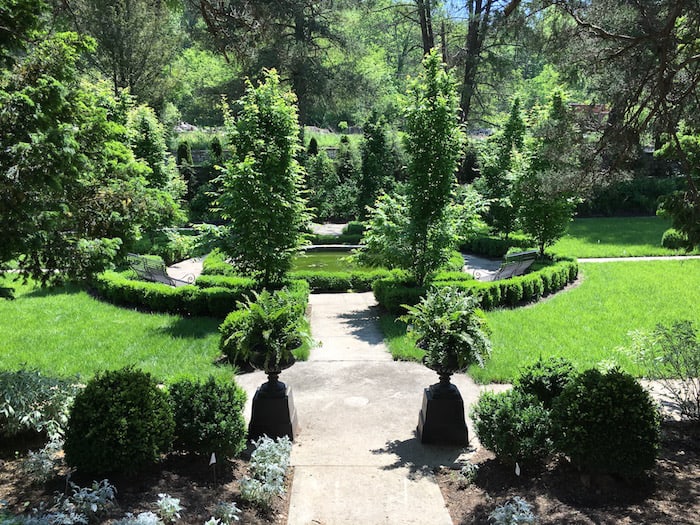
TWW: When you accepted the offer to come here, what else was going through your mind?
Barnes: There were a lot of things. I knew that I was going to have to move closer down to the site. I was living in Southern Indiana, so I just love Louisville. I love everything about it, and I love the food scene, the people there, I had lots of friends, and leaving Brown-Forman really kind of felt like I was leaving a family behind. There was that consideration, but since I’ve been down here in Lexington, it’s been wonderful too. The city has grown a lot. The bourbon bar scene is improving every year. The culture and environment that I was used to in Louisville, I didn’t really sacrifice anything to come down here to the middle of nowhere, Millville, to this sleepy distillery that we’re waking up.
Another consideration [was that] my husband had to find a new line of work. He was a personal trainer up there, so he sold his little studio gym in southern Indiana and we’re actually getting ready to start roasting coffee beans, start a little micro roastery.
TWW: Any butterflies?
Barnes: I would say yes. Occasionally I’ll get a wave of terror with everything that we need to get done and trying to impose a timeline on it. The one thing that I appreciate most about my team, our team, is that we won’t sacrifice quality just to meet a deadline. It’s been from before I started that the distillery would be running this past November and then we moved it to a little more realistic date in January, and then we figured, no it’s going to be April, okay no it’s going [to be] June. We’re still stuck on June right now. We’ll see if we make that or not. Just giving ourselves the time to make sure that everything is put together in the proper way because we’re doing construction, and welding, and electric, and all of the new utilities and everything all at the same time, so it’s been an overlap trying to line everything up in a way so we’re not going back and redoing things.
It’s really in total moving in the right direction and we are very close.
TWW: When I drove onto the property, one of the first thoughts that came to my head was, “this is a project of a massive scale.” How do you prioritize and what are the priorities to get Castle & Key running?
Barnes: Well everything is happening all at once, like I said. It is hard to prioritize. We haven’t had a true project manager from the beginning so it’s really been us three owners that have been putting the task list together, developing the timelines. I don’t know that we’ve done the best job, but I think that that’s part of the experience too, having the struggles and the experience and learning as we go. That was one thing again that drew me to it.
At my old job, it was a big corporation. There was a department for everything. At this new job, we are the department. Each one of us is wearing a thousand different hats and sometimes we overlap, and sometimes we step on each other’s toes, sometimes we remind each other and push each other in the right direction, and I would say that’s what’s happening most of the time that we’re making each other better and improving the project in total just by continuously collaborating.
Well everything is happening all at once, like I said. It is hard to prioritize. We haven’t had a true project manager from the beginning so it’s really been us three owners – Will, Wes, and myself – that have been putting the task list together, developing the timelines. I don’t know that we’ve done the best job, but I think that’s part of the experience too, having the struggles and the experience and learning as we go.
Each one of us is wearing a thousand different hats and sometimes we overlap, and sometimes we step on each other’s toes, sometimes we remind each other and push each other in the right direction, and I would say that’s what’s happening most of the time that we’re making each other better and improving the project in total just by continuously collaborating. We are also working with an engineering firm, Vitok, and they’ve done a good job at keeping our expectations realistic.
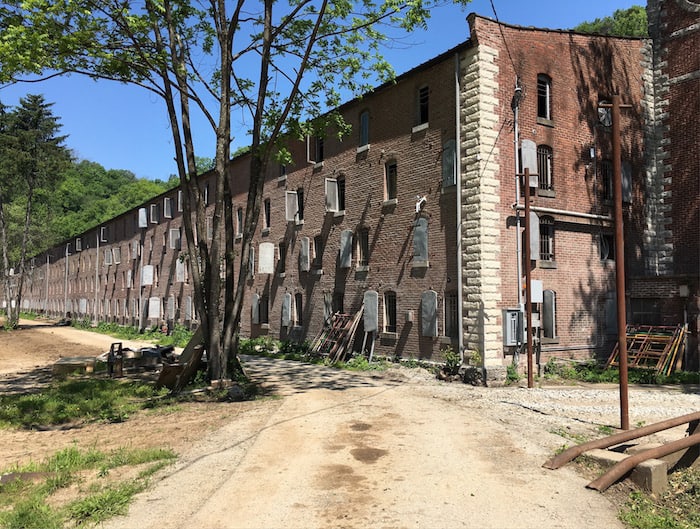
TWW: Coming from the tech world like I do as part of my background, you get the sense of something being a start up. Usually a start up kind of comes from an idea, but there’s no sort of groundwork laid for it necessarily. You guys in a sense have a start up here, but your start up in a lot of ways is renovating something that has a long, established history.
Do you thus see what you’re doing here as being disruptive in the bourbon industry?
Barnes: In a way, yes. The guys chose me to be their master distiller – a young female – that was disruptive to Kentucky. That’s gotten a lot of press for us. A lot of women in the industry say “I don’t see myself as a woman” because I don’t walk into a room and think people should listen to me or they won’t listen to me because I’m of a different gender. I’ve never really seen myself that way. It probably stems from the fact that I have very supportive parents. They never treated me one way or the other. They encouraged me to do Miss Teen Oldham County Pageant and then go to auto shop the next day and change my carburetor on my old Oldsmobile.
When people come up to me and they say, “this is just so exciting for women,” I think it is, and it’s been a long time coming for Kentucky.
Not only that but then restoring this site, it had been overlooked so many times and I think it’s partially because of the scale. A lot of folks, big corporations were looking at this, so they had to justify the budget and it was going to be tens of millions of dollars. We’ve … really been able to pull a team together that’s here for the passion of the project.
We’ve probably done it with a third of the budget of some of these bigger guys. I think corporations as a whole probably end up spending more per project than a start up would. We’re scrappy. You know we chose to take this on and people I think were surprised by it. We are not purchasing whiskey from somebody else and that seems to be an uncommon thing among microdistilleries, just waiting for our own products.
We’re going to make gin, which is also a little disruptive in Kentucky. A lot of people were thinking we would produce moonshine. We’re not planning to produce any moonshine unless there’s just an outcry.
TWW: It seems to be that there’s actually less desire for white whiskey these days.
Barnes: I think it’s a product of curiosity. You kind of want to know what it tastes like, but after you know, why would you buy it again. It’s not in our plan, but I don’t know that it’s a great product to be your first impression in the market.
Doing something like gin, and gin in particular, I’ve learned takes a lot more skill and precision and really a craft to assemble. Particularly for us, since we’re using the fresh ingredients as much as we can, it would take probably a thousand acres of juniper to produce what we would need in a year. I don’t think that we’ll be producing all of our juniper.
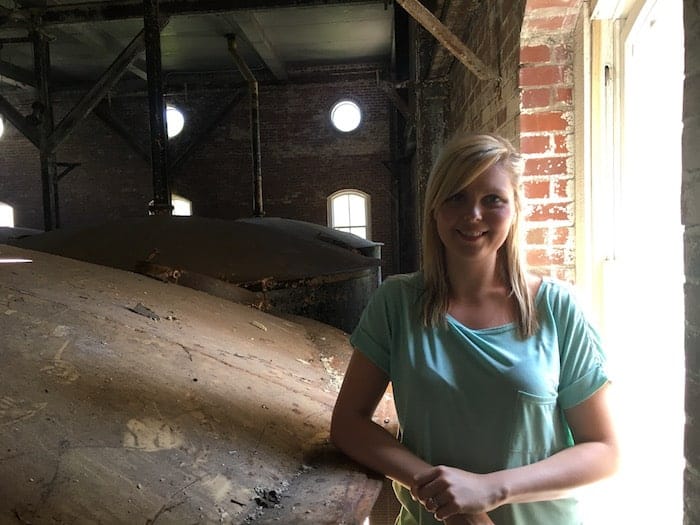
TWW: A project like this has a certain degree of risk and potential for failure. How do you combat that fear?
Barnes: I have had so many people come down here and say, “there’s no way that this will not be successful.” The site draws hundreds of people here on its own even without being open. It’s a showstopper and people are excited. In its time it was one of the premiere tourist attractions in the state. Over time, people have just completely forgotten about it. It’s been lost to history so bringing it back, I have to imagine that people will fall back in love with it and start to come back again.
One thing that I’m not worried about is the finances of it and what I was told by the guys before I started coming here is, “it may feel risky, but it’s more of a bet on yourself and your skills and your ability to produce than the financing or any of those other kind of new start up concerns.” I have never really been one to back down from a challenge, so the risk really is more on how hard I am willing to work to make my side good, the product side.
TWW: So, that being said, what’s a typical day like for you here? What time do you get started? What do you go through? What time do you finish? How exhausted are you by the time you get home?
Barnes: It really depends on the day. Normally my crew gets here at seven and they’ll work until about three-thirty. I’m typically here until about five. I’ve come in as early as five o’clock on some days to get some distillation done before the crew gets here so that I don’t have to worry about trying to make a couple hours in the lab work when I’ve got so much else going on. I’m trying to figure out all of our recipes for our whiskey recipes, our gin recipes, identifying suppliers for all the ingredients, the yeast, the grain, the barrels.
[I’m also] working with the engineering firm to get the distillery ready, so looking at all the existing equipment that was here, how are we going to connect it all together. What’s the new process going to be, how automated is it going to be, what are all the operating procedures, how are we going to run it, developing all of that. Working with the electricians to make sure that they’re on track time wise, pipe fitters to make sure that they’re on track and have everything that they need.
I’m continuously walking the process to make sure that valves and everything are in the right spots, so I don’t have to hang over the edge of a wall or on a five foot ladder to reach a valve that I’m going to be turning every two hours. Ensuring that the process and everything is being installed correctly the first time.
Then [there’s] everything else that’s going on. We’re fixing the gardens and developing the tour paths and putting together our marketing messaging and branding and labels and bottles, and like I said, there’s not a department for that. We’re all doing everything.
TWW: Do you ever feel overwhelmed?
Barnes: It definitely can be overwhelming. As you might feel, just sitting here in the garden, it’s pretty relaxing in different spots on the site. I can either escape down here to the garden to get a little bit of peace, or I can go out to the other end of the property to the botanical and just sit down by Glenns Creek, listen to the dam flowing, just take inventory and make sure that I’m not getting overwhelmed and am able to continually make progress because it’s hard when there’s so many different things going on.
We’ve also continued to add to our team. We have a brand ambassador, we have a director of tourism and guest experience, we have our controller who is doing all the regulatory work and helping me get everything straightened for documentation of the process and all these TTB regulations, that sort of thing.
TWW: When you think about the size, the scope of this property, you’ve probably had a lot of wow moments as you’ve wandered around exploring things and thinking about what could I do with this, or oh my god, that’s awesome, I’ve just stumbled across this.
What have been some of your favorite wow moments since you’ve come on this project?
Barnes: I think that probably my favorite has been discovering some old engineering drawings. We have some that were from National Distillers as early as the 1930s and we have some from the 1940s and 50s. Seeing how the process has changed and it’s really helped me to identify all of these underground pipelines, where are they going, what do they use them for, so we’re actually able to tap into some of the old network. It’s already been engineered for us, so why change it? The pipes are in fairly good shape.
Some other wow moments – I would say removing the old still was a big wow moment in our progress. [Also,] when we finally got the spring pumped down for the first time [from the] big keyhole shaped spring house [that] holds a hundred and forty thousand gallons of water. We really didn’t know where the water was coming from until we pumped it out. It’s about ten feet deep and at about seven feet down you start seeing the natural limestone bedrock. It gets real jagged. When you pump it all the way down, you can see where they just punched holes clear into the sidewalls so there’s water just pouring in from the side. It’s not creek water even though it looks kind of gray and green, it really is fed from an underground aquifer.
TWW: That’s cool. When do you expect to have your first whiskey distillate?
Barnes: If we get the distillery started in June as I hope, it will be early July at the latest. It’ll take a week to get everything in through the system. Hopefully only a week, [though] it could be a couple weeks to get all the kinks worked out.
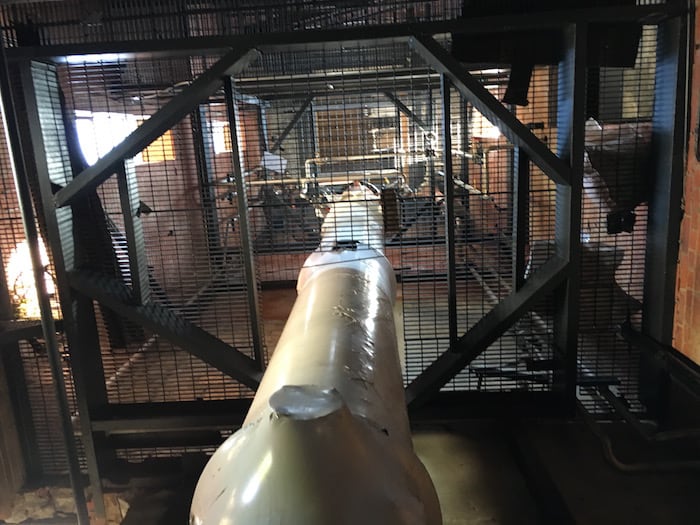
TWW: What do you think is going to be your minimum barrel aging time before you release something?
Barnes: It will depend per product. We’re going to be doing a malt whiskey, a rye whiskey, a couple different bourbon recipes, so the standard bourbon, our core bourbon, will be a bottled in bond so that’ll be at least four. We are going to be doing a rye and a malt that we could release a little bit younger, potentially a two, three year product. I don’t expect to release anything less than two.
TWW: So you guys recently changed the name of the distillery officially to Castle & Key. Talk a little bit about, not the legal or whatever, but more about the sense of what that name means to you.
Barnes: We had been talking about names since I’ve come on so it’s been over a year that we’ve been batting around what to call this place [and] it’s been probably the most challenging decision to make. It is the Old Taylor Distillery, it’s what it’s always been. We couldn’t keep that name for a lot of reasons. Castle & Key for us was the next best thing because [of] the imagery of the name, the castle, the limestone shaped castle, and then the keyhole shaped spring house.
For the meaning of the name, the castle we feel Colonel Taylor was using as symbolism for protection from an industry in his time that really wasn’t reliable. They were selling whiskies by the barrel which is one of the reasons he fought for the Bottle in Bond Act. You just didn’t know what you were getting. Doctors were complaining that their patients were even becoming more ill, so the castle is a symbol of protection for his whiskey in an industry that really wasn’t transparent or honest with what was going from one place to the next. That’s our kind of bottle in bond reference to the castle.
Then the key is, of course, the keyhole shaped spring house Colonel Taylor used, and this water source is his key to his bourbon recipe. It’s naturally fed from an underground aquifer, iron free, calcium rich. That’s our key too. We’re going to be using the same water source.
TWW: The next question is about legacy and its two parts. How do you honor the legacy of this place? What legacy do you want to leave?
Barnes: The legacy that I see in this place that Colonel Taylor left behind was the beauty here, starting with the bourbon tourism before bourbon tourism was popular. He would bring in people here to show off the distillery that he built to protect his bourbon, which he was very vocal of was the best in the world. Just honoring what his intentions were to bring people here to fall in love with Kentucky and to fall in love with bourbon. Really just in the spirit of entertainment, not taking himself too seriously, although he was a bit of an ego and I would say a show off also.
He spared no expense in building this place and I want to bring it back in his original vision. Colonel Taylor actually didn’t want anybody else to distill here. He put it in his will that nobody else would make bourbon at his distillery. His sons had to break his will in order to transfer the stock to the American Medicinal Spirits Company, which then sold to National Distillers. I think that’s interesting that he would’ve preferred it just to be kept as a museum and gardens and have people here to, I don’t know, maybe to see his shrine.
Just bringing it back in that spirit, doing it the right way with quality and transparency always in mind for everything that we do from the gin to the bourbon. The legacy that I want to leave is really understanding the importance of what Colonel Taylor did for the industry. What I think I bring is a thoughtfulness to development of the recipes and the products. I think just creating a legacy of forward thinking and thoughtfulness.
Hopefully also really tasty bourbon.
TWW: What does tasty bourbon mean for you? What makes a good bourbon?
Barnes: That’s a great question. For me, my palate always appreciates balance, so I want something that’s very complex and flavorful, obviously free from any defects and off notes, but just very well balanced. Early traditional whiskeys for example, the one that I tasted when I first got the job that was distilled in 1917 here really surprised me and opened my mind to older styles of whiskey. Having a chemical engineering degree, I thought they had none of the technical knowledge or analytical abilities to test the quality of what they were making or make it consistent, so how could they have possibly made as good a whiskey as we can make today? That one sample in particular really changed my mind. It was so flavorful and complex. Granted it had been in a barrel for sixteen years, but just the sweetness of it. It spoke to me.
[I’m] using that as my inspiration, but maybe taking it a little bit more in the direction of the spice and the fruit flavors that you get a lot out of today’s whiskies. Balancing out the flavor wheel as opposed to staying all towards sweet and wood, I want to bring in some of those other notes as well, while still keeping it a traditional recipe [with] a lower percentage of rye. We’ll be using white corn because that’s what Colonel Taylor used, starting right away with non-GMO, but moving into the future into an heirloom variety.
It just takes a while to get all that corn that you need and I had no idea until my farmer kind of gave me a wake up call. He goes, “you know it’s going to take three years to get all this corn.” I was like, “Oh shoot. Well let’s get started on that now.”
Those types of learnings have been part of the fun of it. I’ve been on a combine, harvesting corn. I’ve kept in very close contact with my farmer so that even from field to field we can adjust the nitrogen levels in the soil to make sure that the grain’s going to turn out just right for distillery use.
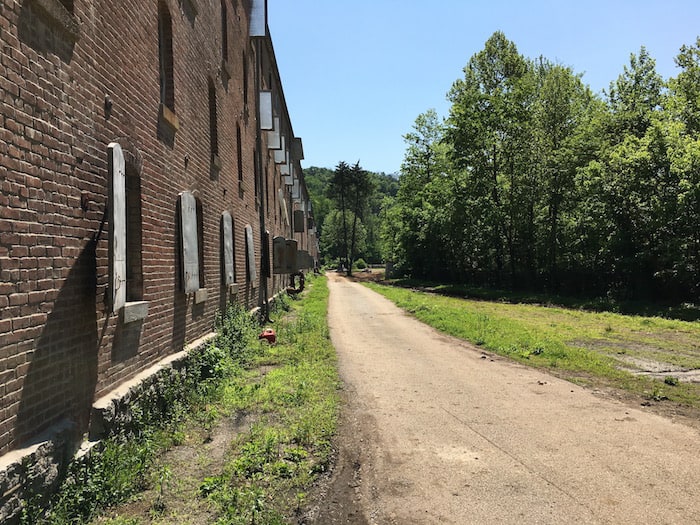
TWW: Last question. When we think about start ups in the sort of technology sense, we tend to think about what the five year, the ten year, the fifteen year plan is. What do you see Castle & Key being in five years, fifteen years? Right now, you’re kind of laying the base for the gin, you’ve got a distillery that’s maybe about a quarter rehabbed, a lot more to do. What does that look like down the road?
Barnes: Five years down the road, we will just be releasing our traditional bourbon so it’s hard to imagine how exciting that’s going to be. In our first year, we’ll be working hard to create a market for ourselves with the gin. Then in five years down the road, I’ll be back hitting the pavement to hopefully create a market for our new bourbon.
It’ll be interesting to see what happens to the market between now and then. It’s almost like you wish you had a crystal ball so that you could predict the future, but nobody can. One thing that gives us a lot of confidence is the amount of money that all these other large corporations are putting into the industry and building new warehousing and even new distilleries. We feel good that this is still a good time to enter into the industry with the way that the international markets are.
I think that there will be room for us out there on the shelves. In fifteen years, that’ll be even harder to imagine. I hope that we are up there with the other big boys like Woodford, who started in ’96 and twenty years later they’re at half a million cases almost. Hopefully we’ll be getting close.

